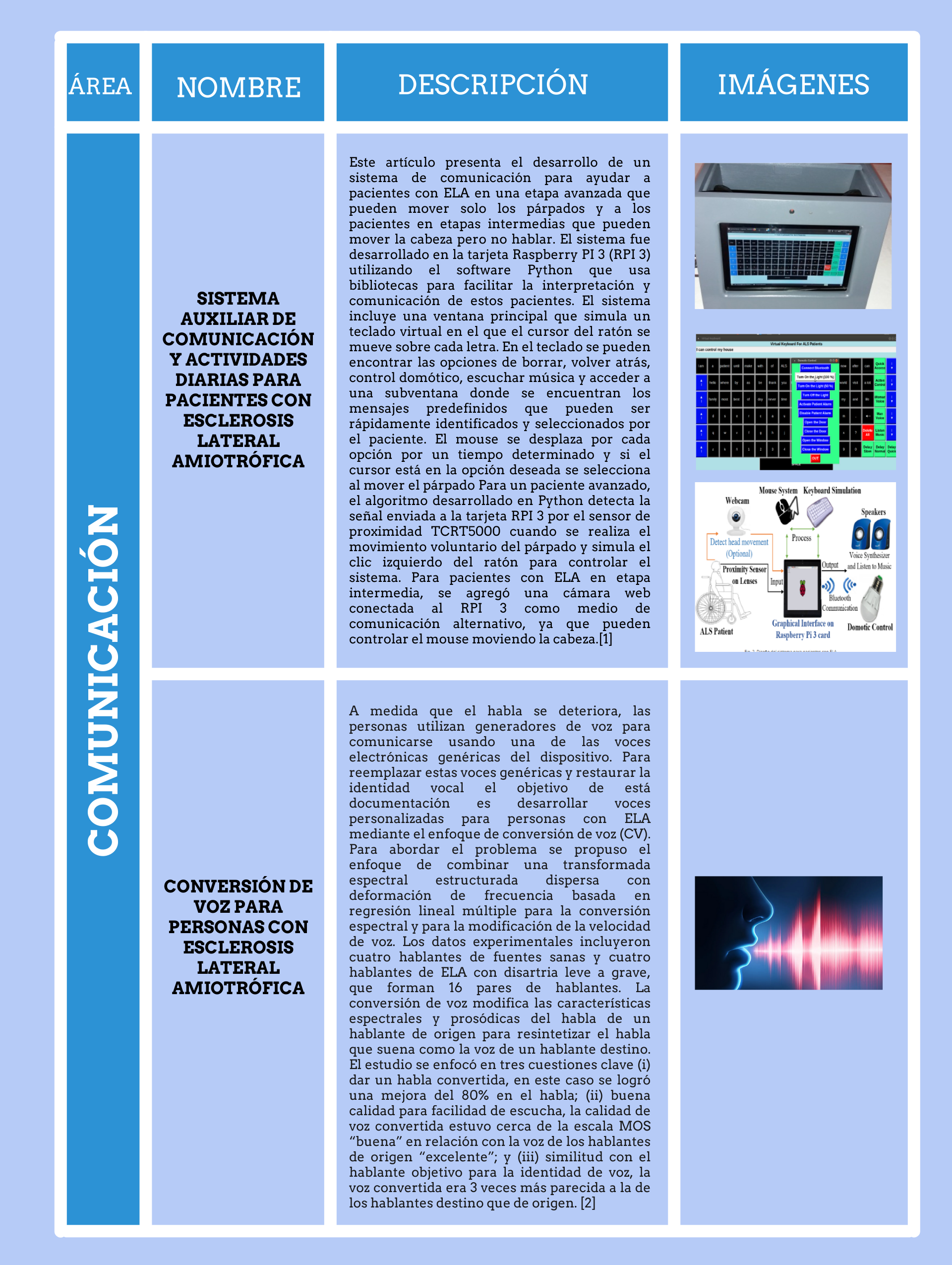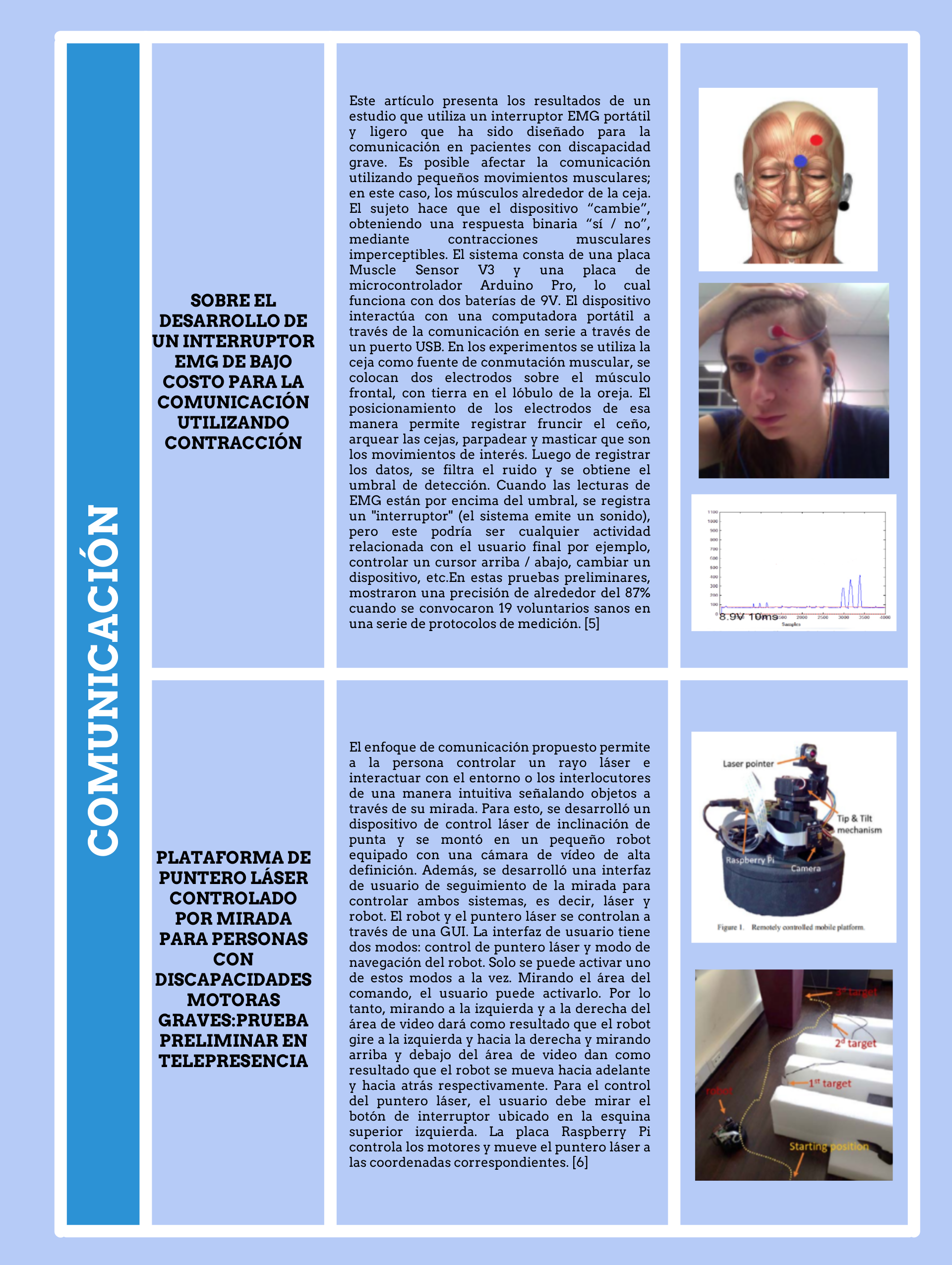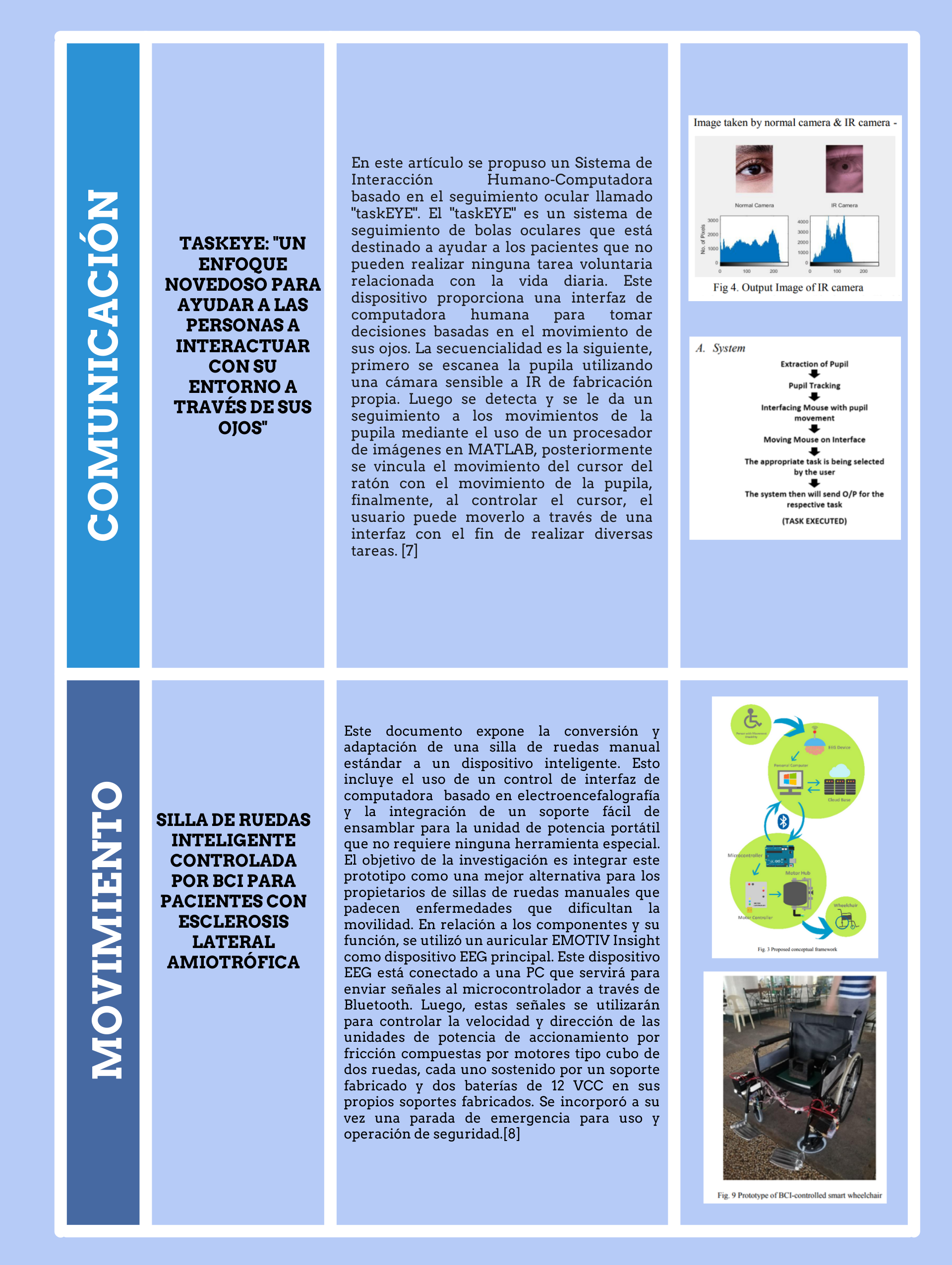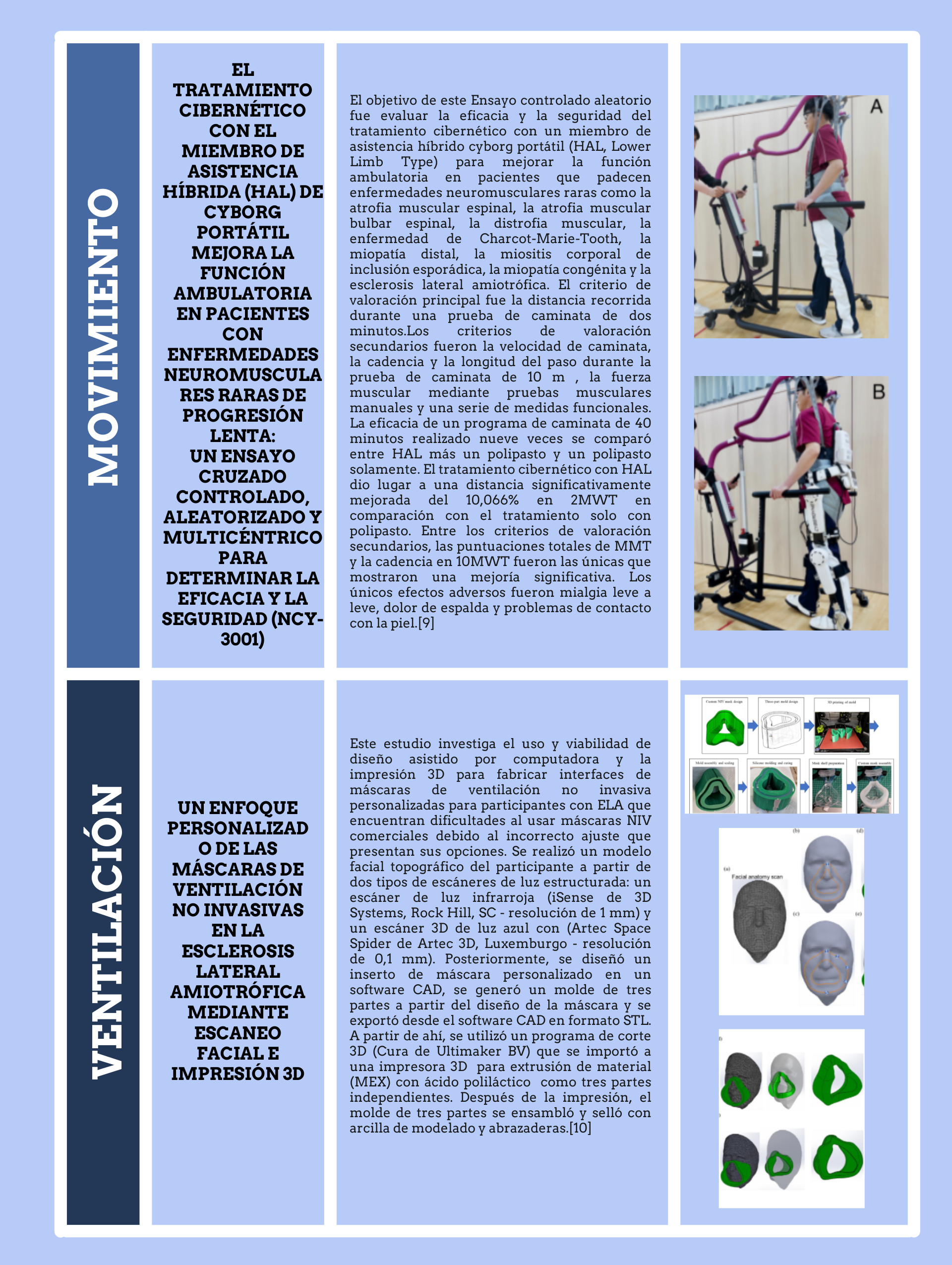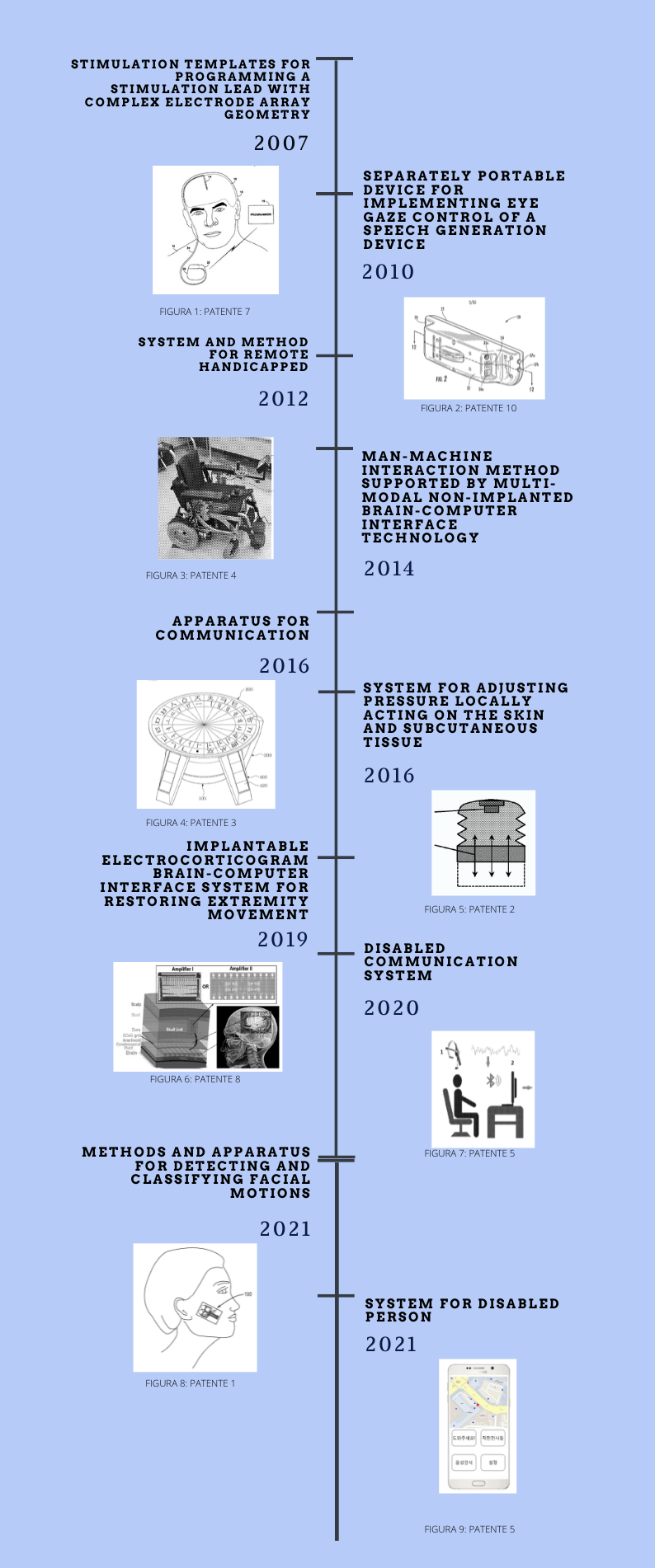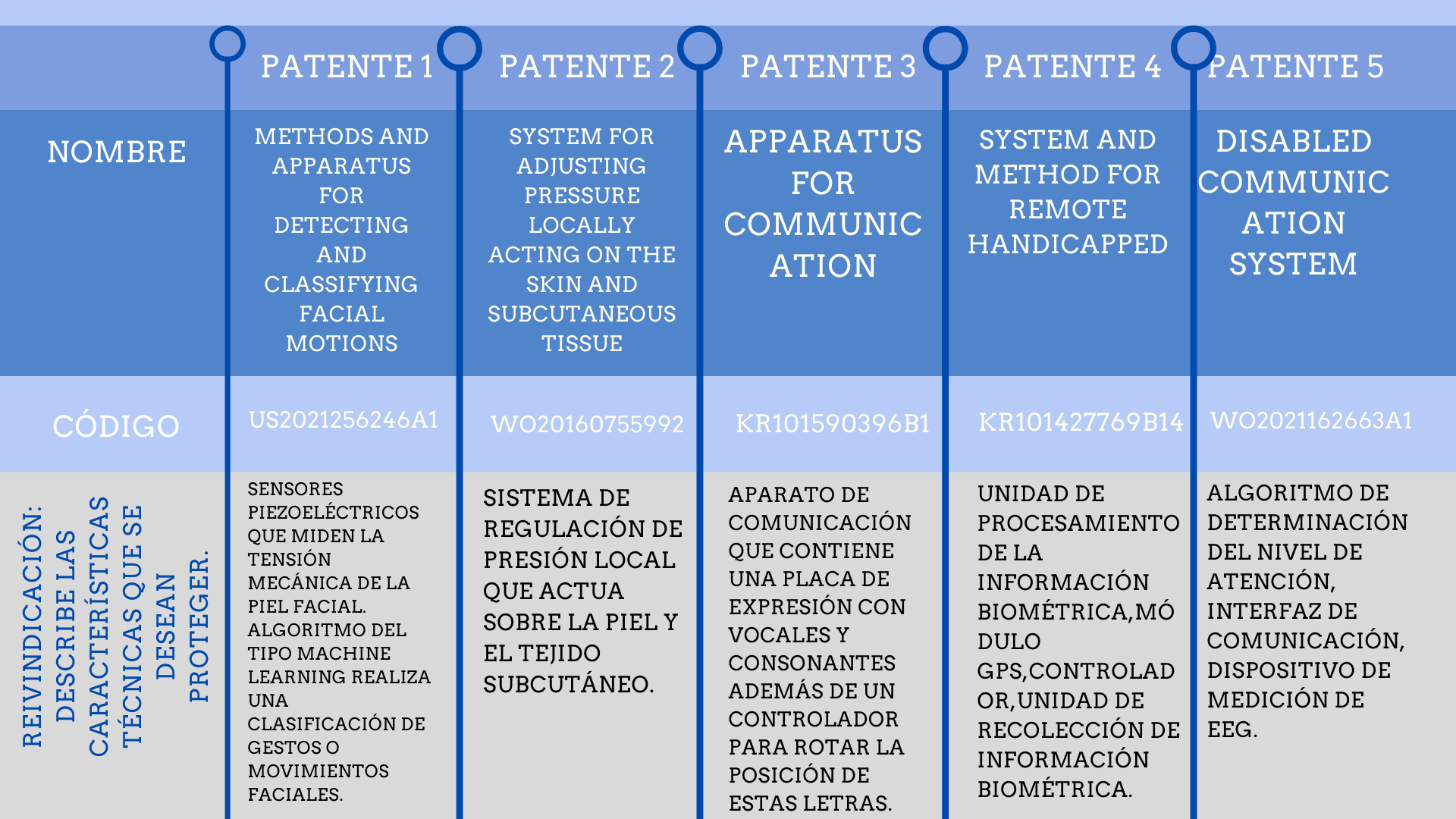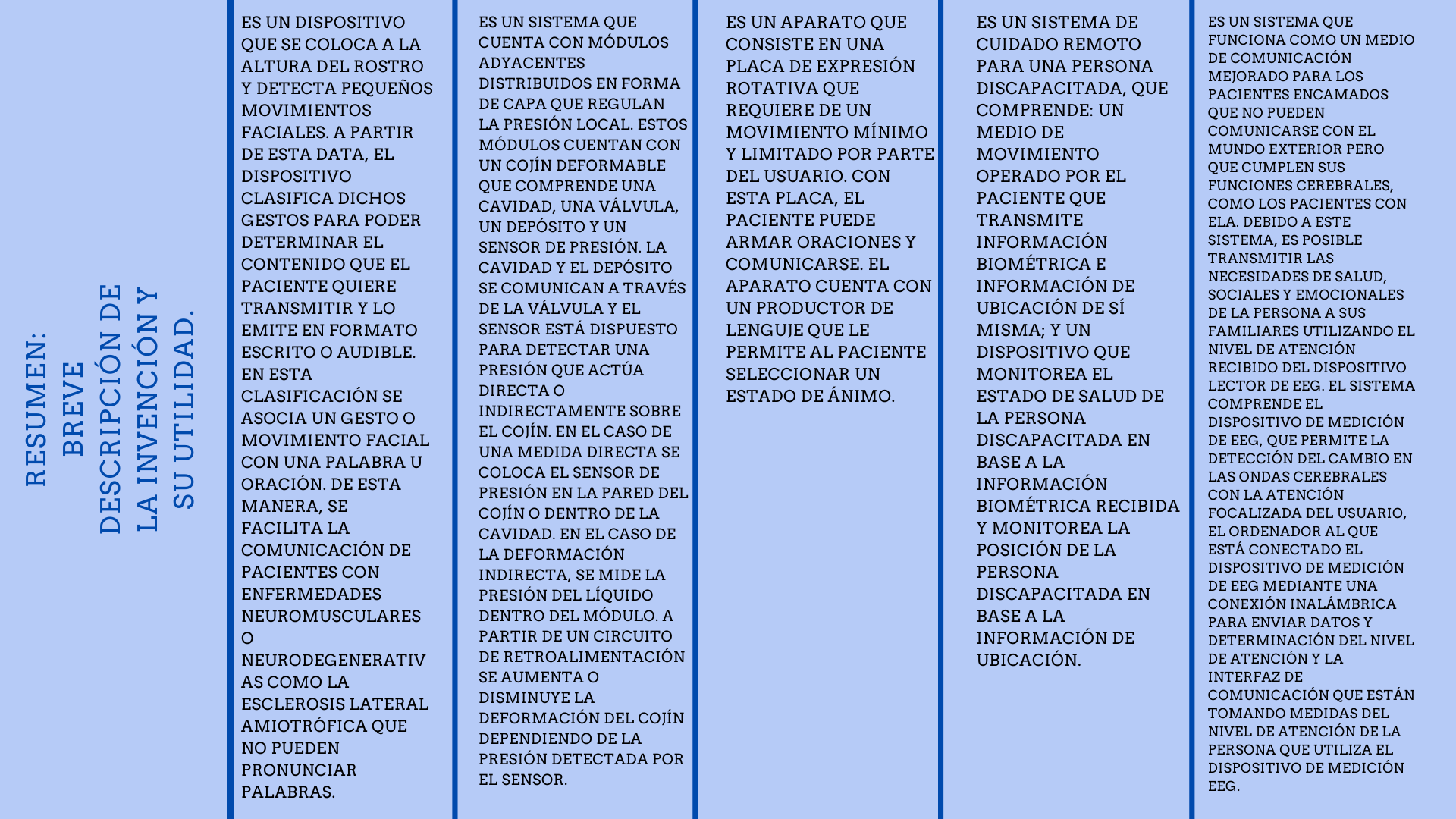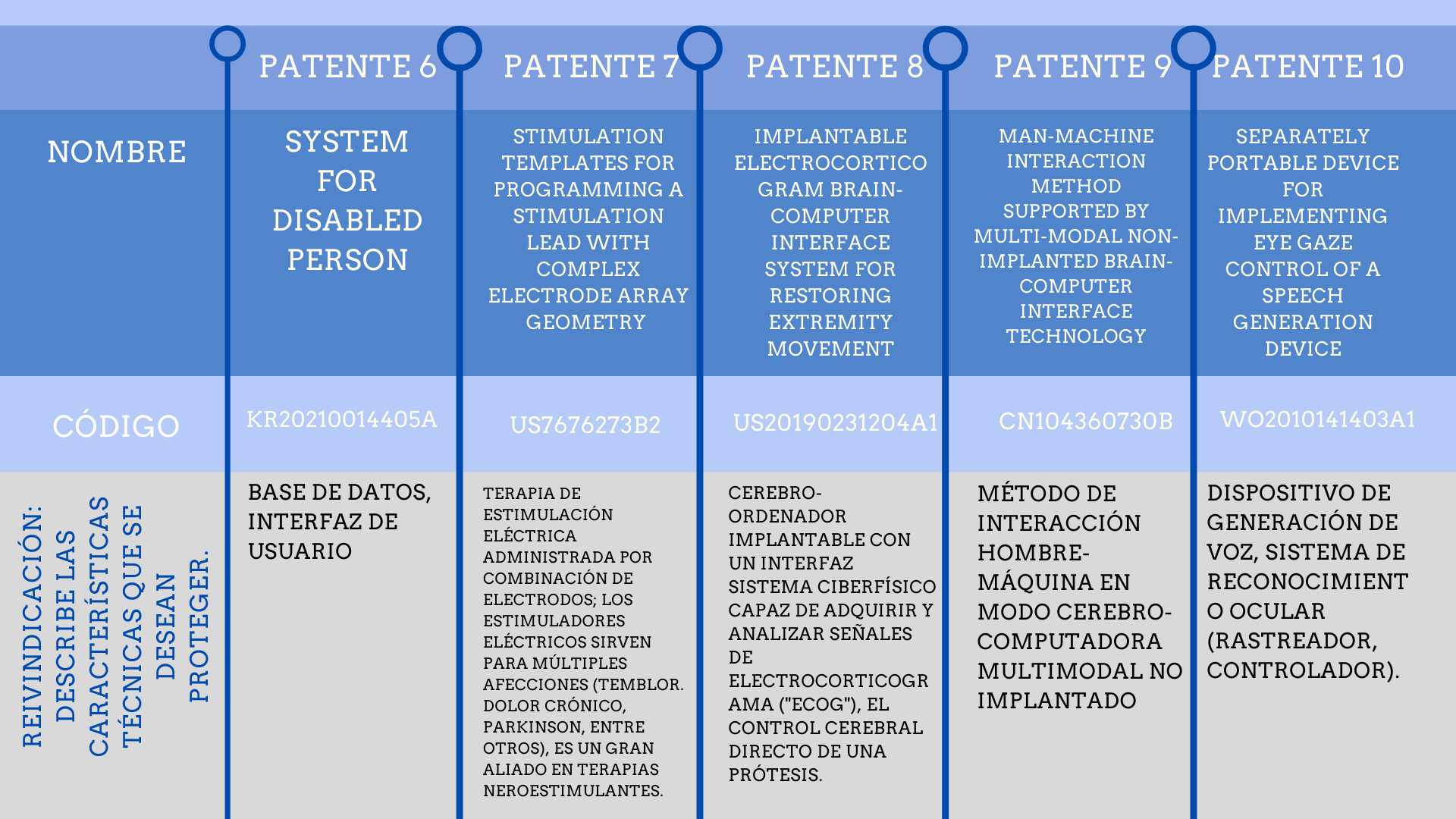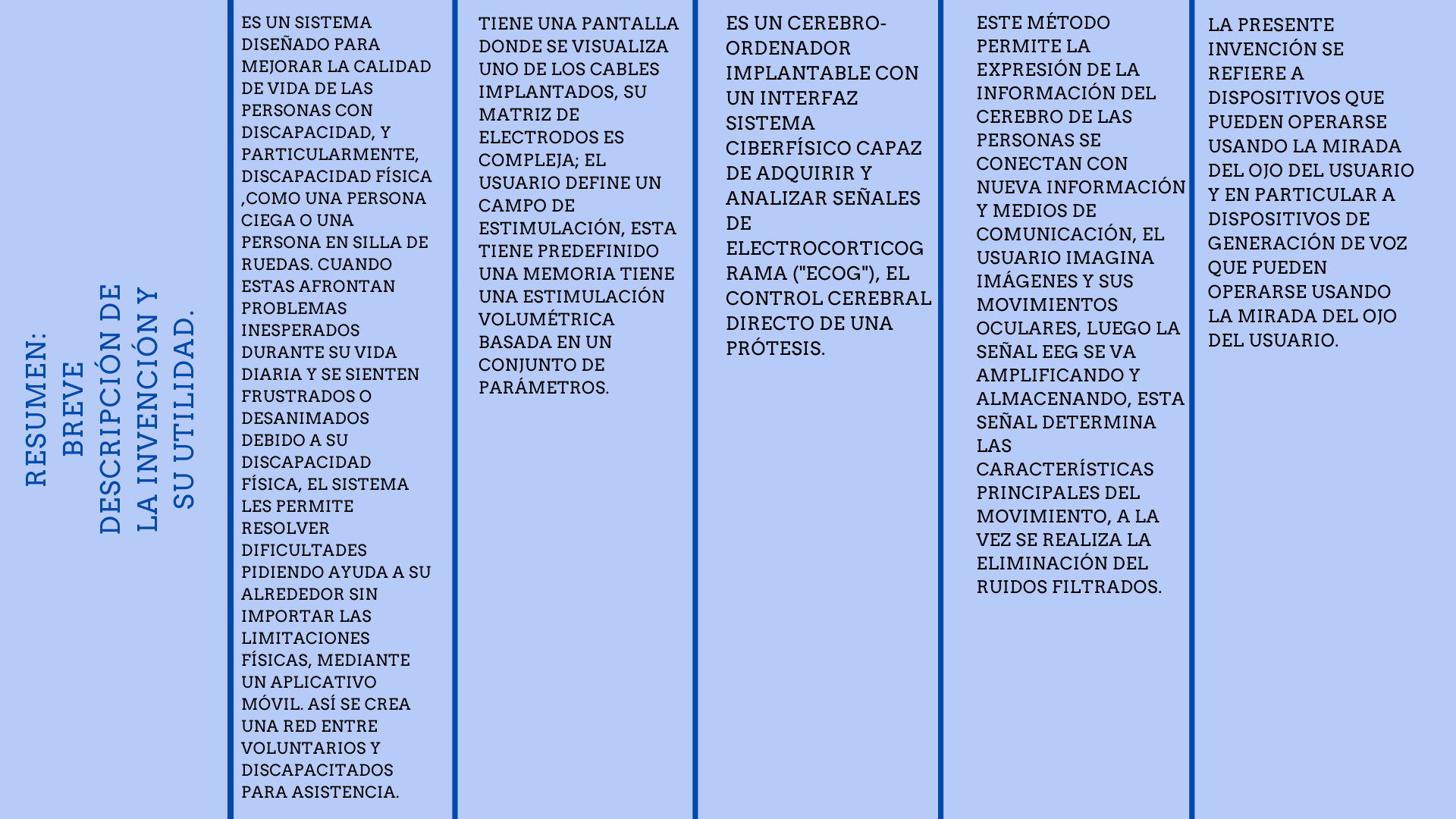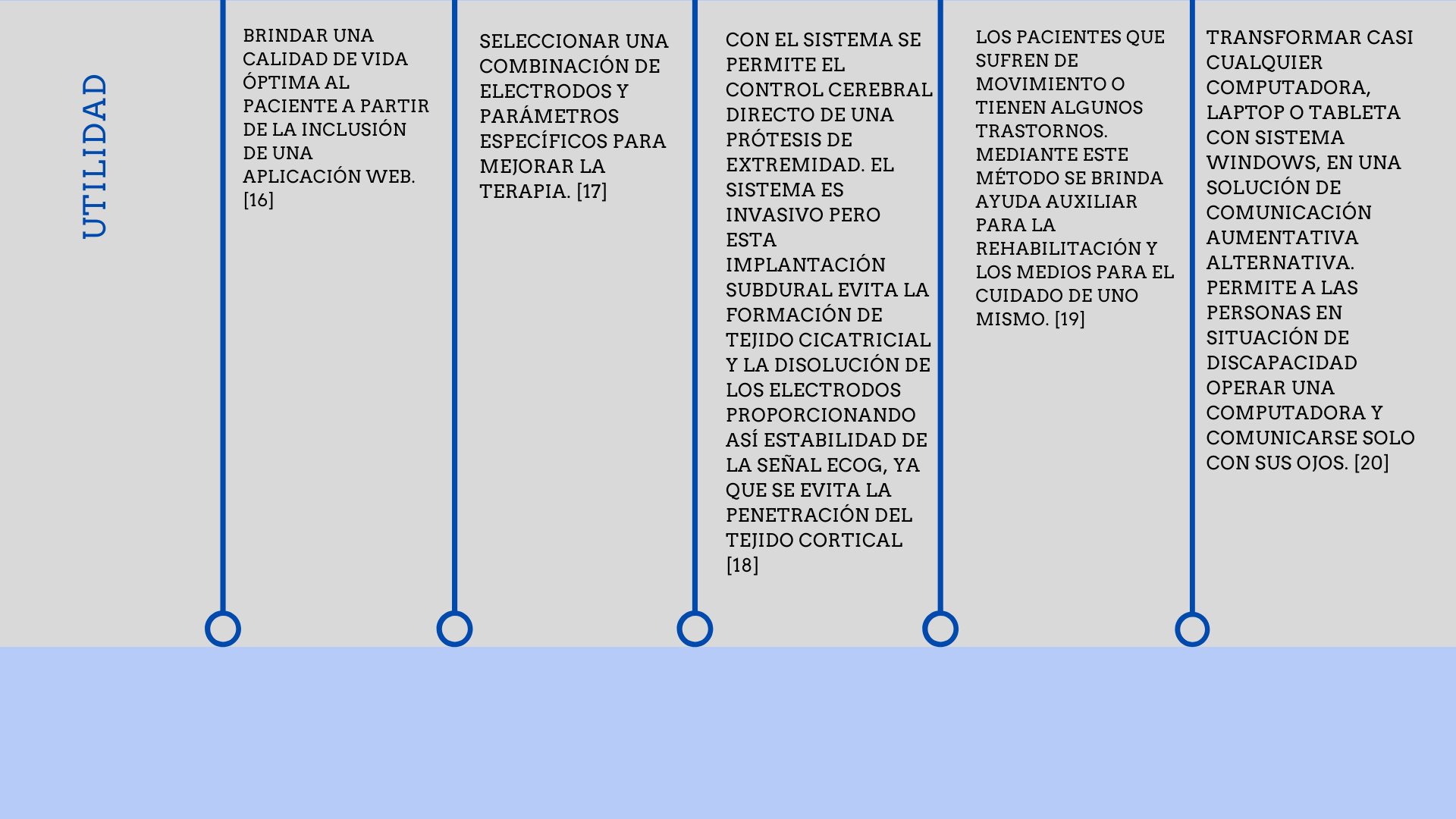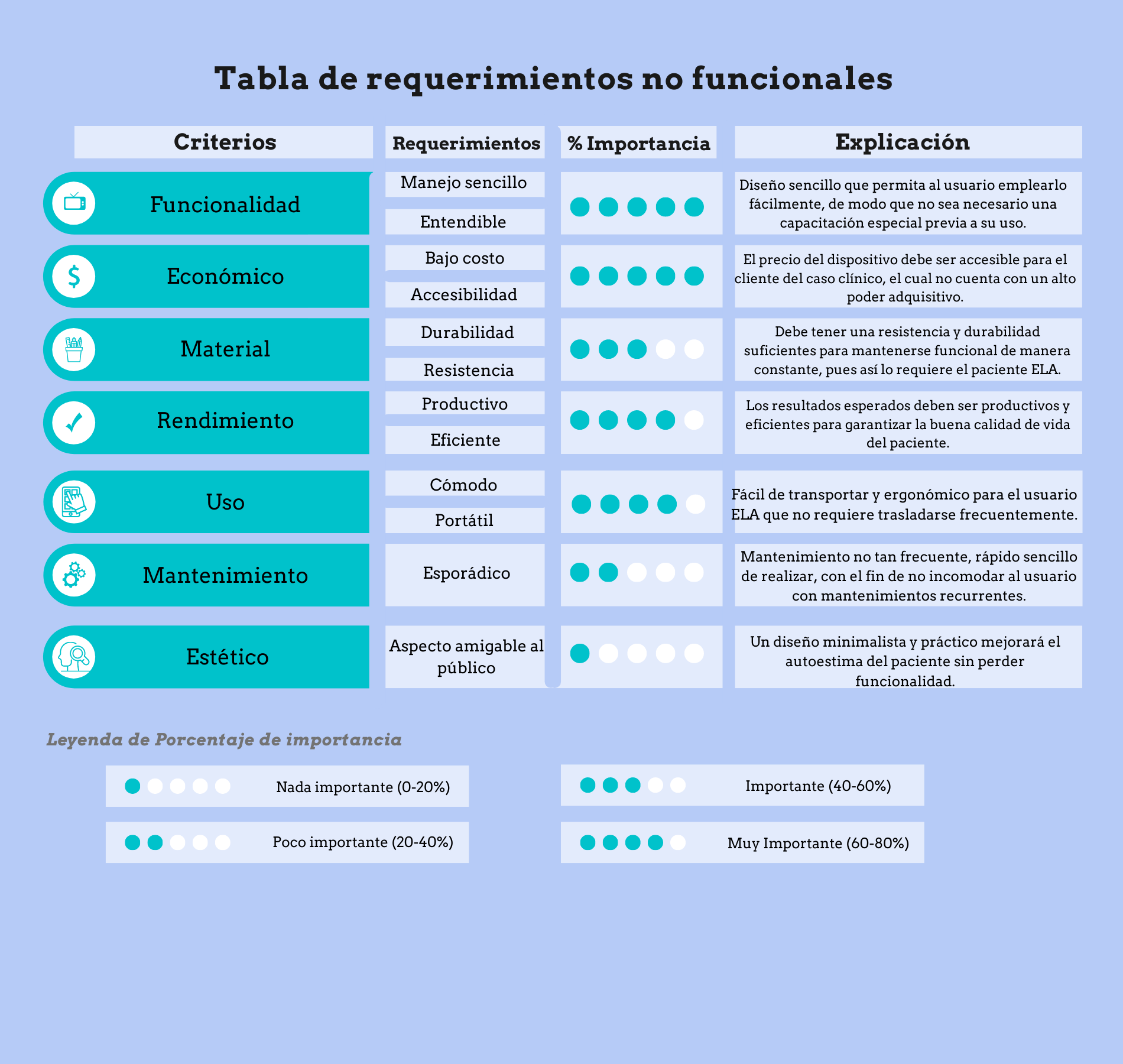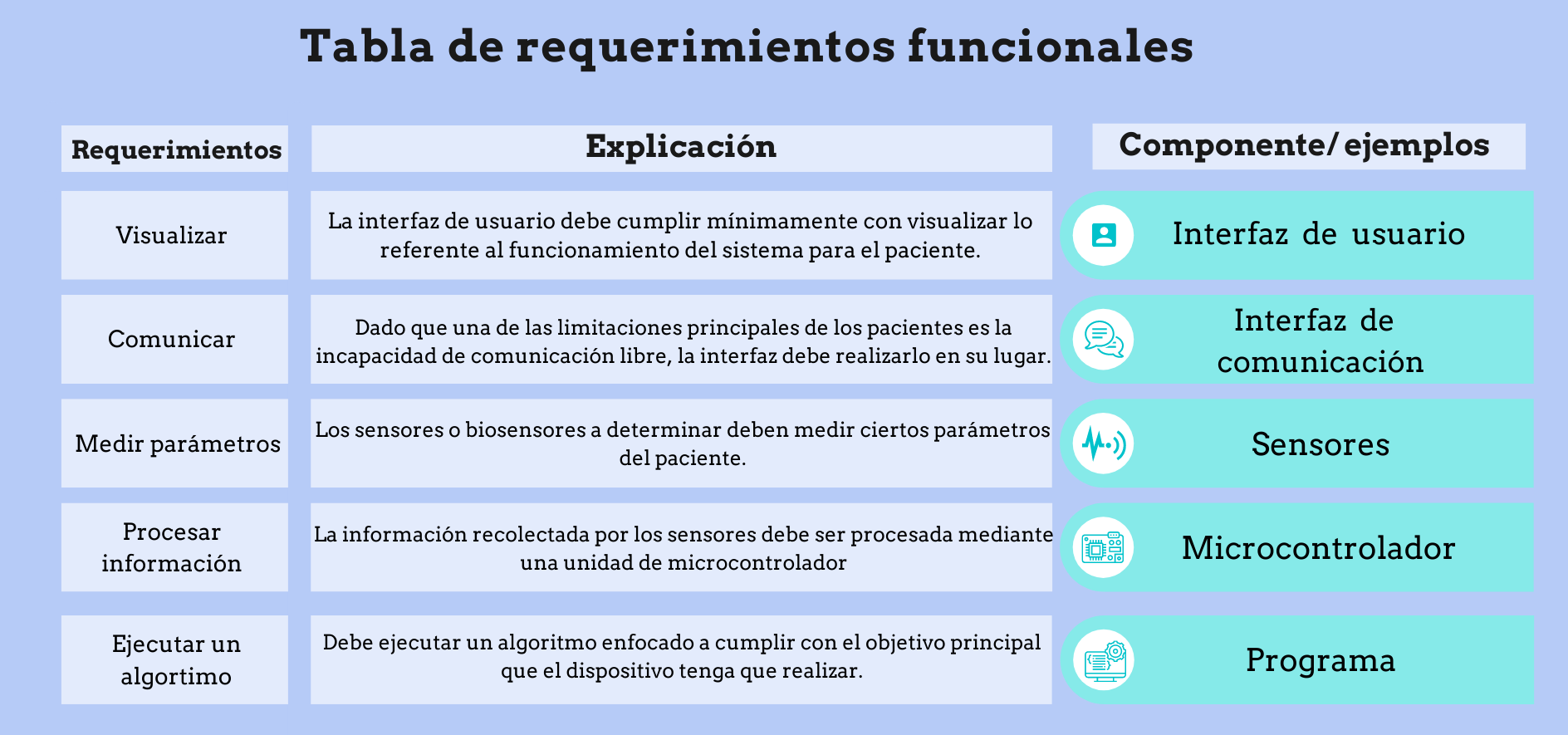Bibliografía
[1] H. Collaguazo, P. Córdova and C. Gordón, "Communication and Daily Activities Assistant System for Patient with Amyotrophic Lateral Sclerosis,", 2018 doi: 10.1109/ICEDEG.2018.8372373. [En línea]. Disponible en: https://ieeexplore.ieee.org/document/8372373
[2] Y. Zhao, M. Kuruvilla-Dugdale and M. Song, "Voice Conversion for Persons with Amyotrophic Lateral Sclerosis," Oct. 2020, doi: 10.1109/JBHI.2019.2961844. [En línea]. Disponible en: https://ieeexplore.ieee.org/document/8943284
[3] F. Rosado, I. Rumbo, F. Daza, H. Mercado and D. Mier, "Morse code-based communication system focused on amyotrophic lateral sclerosis patients," 2016, doi: 10.1109/STSIVA.2016.7743358. [En línea]. Disponible en: https://ieeexplore.ieee.org/document/7743358
[4] Ishigami H, Tanaka S, Ueno A. Non-contact Measurements of Blink-Associated Electrooculogram Using In-Pillow Cloth Electrodes: Potential Application as a Communication. 2020. doi:10.1109/EMBC44109.2020.9176251 [En línea]. Disponible en: https://pubmed.ncbi.nlm.nih.gov/33018911/
[5] B. García-Conde and C. J. James, "On the development of a low-cost EMG switch for communication using minimal muscle contractions," 2016, doi: 10.1109/EMBC.2016.7591035. [En línea]. Disponible en: https://ieeexplore.ieee.org/document/7591035
[6] A. Petrushin, G. Barresi and L. S. Mattos, "Gaze-controlled Laser Pointer Platform for People with Severe Motor Impairments: Preliminary Test in Telepresence," 2018, doi: 10.1109/EMBC.2018.8512722. [En línea]. Disponible en: https://ieeexplore.ieee.org/document/8512722
[7] K. Kavale, K. Kokambe and S. Jadhav, "taskEYE: "A Novel Approach to Help People Interact with Their Surrounding Through Their Eyes"," 2018, doi: 10.1109/ICALT.2018.00078. [En línea]. Disponible en: https://ieeexplore.ieee.org/document/8433525
[8] N. M. D. Espiritu et al., "BCI-controlled Smart Wheelchair for Amyotrophic Lateral Sclerosis Patients," 2019, doi: 10.1109/RITAPP.2019.8932748. [En línea]. Disponible en: https://ieeexplore.ieee.org/document/8932748
][9] Nakajima T, Sankai Y, Takata S, et al. Cybernic treatment with wearable cyborg Hybrid Assistive Limb (HAL) improves ambulatory function in patients with slowly progressive rare neuromuscular diseases: a multicentre, randomised, controlled crossover trial for efficacy and safety (NCY-3001). 2021 . doi:10.1186/s13023-021-01928-9 [En línea]. Disponible en: https://pubmed.ncbi.nlm.nih.gov/34233722/
[10] Stephen A. Goutman, Lei Chen, Jeffrey S. Plott, Kyle K. Vankoevering, Armando Kurili, Albert J. Shih, Glenn E. Green. A personalized approach to non-invasive ventilation masks in amyotrophic lateral sclerosis using facial scanning and 3D printing .2021. [En línea]. Disponible en: https://www.sciencedirect.com/science/article/pii/S2666964121000229?via%3Dihub
[11] C. Dagdeviren y T. Faritá, “Methods and apparatus for detecting and classifying facial motions”, US 2 021 256 246 A1, Ago. 19, 2021 [En línea]. Disponible en: https://worldwide.espacenet.com/patent/search/family/077272667/publication/US2021256246A1?q=Amyotrophic%20Lateral%20Sclerosis%20communication. [Accedido: 17-sep-2021]
[12] Y. Perriard, et al., “System for adjusting pressure locally acting on the skin and subcutaneous tissue”, WO 2 016 075 599, May. 19, 2016 [En línea]. Disponible en: https://patentscope.wipo.int/search/en/detail.jsf?docId=WO2016075599&tab=PCTBIBLIO&_cid=P11-KTK7UX-06660-1. [Accedido: 17-sep-2021]
[13] K. Sung y Y. Myoung, “Apparatus for communication”, KR 20 160 008 309 A, Ene. 22, 2016 [En línea]. Disponible en:https://worldwide.espacenet.com/patent/search/family/055308849/publication/KR101590396B1?q=Amyotrophic%20Lateral%20Sclerosis%20communication. [Accedido: 17-sep-2021]
[14] C. Ha, J. Ki y K. Hyun, “System and Method for Remote Handicapped Person Care”, KR 101 427 769 B1, Ago. 12, 2014 [En línea]. Disponible en: https://worldwide.espacenet.com/patent/search/family/050141220/publication/KR101427769B1?q=pn%3DKR101427769B1. [Accedido: 17-sep-2021]
[15] S. Nezahat, O. Nalan y O. Melek, “Disabled communication system”, WO 2 021 162 663 A1, Ago. 19, 2021 [En línea]. Disponible en: https://worldwide.espacenet.com/patent/search/family/077292533/publication/WO2021162663A1?q=pn%3DWO2021162663A1. [Accedido: 17-sep-2021]
[16] L. Jun, “System for disabled person”, KR 20 210 014 405 A, Feb. 09, 2021 [En línea]. Disponible en: https://worldwide.espacenet.com/patent/search/family/074559153/publication/KR20210014405A?q=pn%3DKR20210014405A. [Accedido: 17-sep-2021]
[17] S.M. Goetz, et al., “Stimulation templates for programming a stimulation lead with complex electrode array geometry”,US 7 676 273 B2, Ago. 30, 2007 [En línea]. Disponible en: https://patents.google.com/patent/US7676273B2/en?q=Implanted+Brain%E2%80%93Computer+Interface&oq=+Implanted+Brain%E2%80%93Computer+Interface+. [Accedido: 17-sep-2021]
[18] P. Heydari, Z. Nenadic, A. Do y C. Liu, “Implantable electrocorticogram brain-computer interface system for restoring extremity movement”, US 20 190 231 204 A1, Ago. 01, 2019 [En línea]. Disponible en:https://patents.google.com/patent/US20190231204A1/en?q=Implanted+Brain%E2%80%93Computer+Interface&oq=+Implanted+Brain%E2%80%93Computer+Interface+. [Accedido: 17-sep-2021]
[19] Z. Jinhua, et al., “Man-machine interaction method supported by multi-modal non-implanted brain-computer interface technology”,CN 104 360 730 B, Abr. 26, 2017 [En línea]. Disponible en: https://patents.google.com/patent/CN104360730B/en?q=Implanted+Brain%E2%80%93Computer+Interface&oq=+Implanted+Brain%E2%80%93Computer+Interface+. [Accedido: 17-sep-2021]
[20] D, Brunecz, et al., “Separately portable device for implementing eye gaze control of a speech generation device”, WO 2 010 141 403 A1, Dic. 09, 2010 [En línea]. Disponible en: https://worldwide.espacenet.com/patent/search/family/043298069/publication/WO2010141403A1?q=WO2010141403A1. [Accedido: 17-sep-2021]
